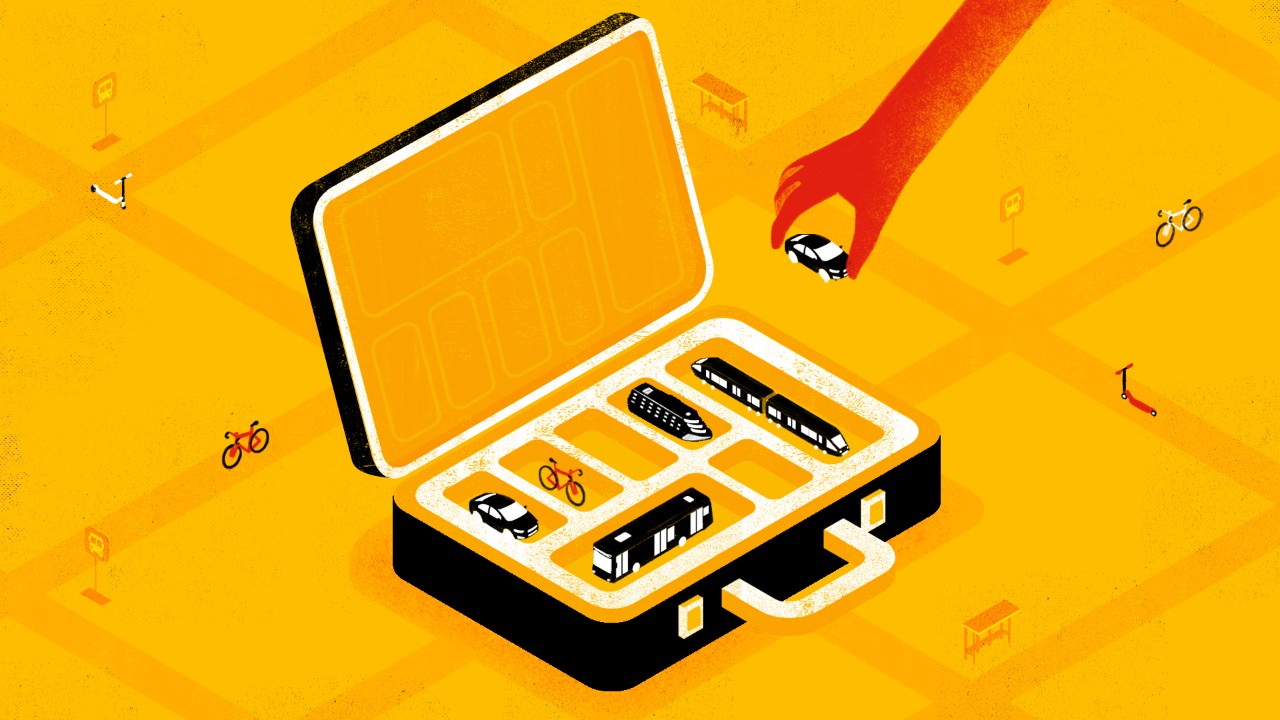As a former US Department of Transportation official, Sarah Feinberg knows plenty about transit issues. But little prepared her for taking the helm of New York City Transit on March 9. The city that day had only 16 reported cases of COVID-19. Over the next two weeks, infections and deaths soared, and authorities closed schools and nonessential businesses. By the end of the month, ridership had collapsed by 90 percent on the city’s subways and nearly 80 percent on buses.
“I had spent zero moments of my life thinking about how the New York City transit system is cleaned and disinfected on a daily basis,” Feinberg told an online symposium on the future of urban mobility organized by the Oliver Wyman Forum and the University of California, Berkeley. “It suddenly became something that was taking a massive amount of bandwidth.”
Feinberg is far from alone. Commuters, businesses, transit executives, and mayors around the world are struggling to define a new normal of work and travel as the pandemic continues to disrupt lives and economies. This is no one-time challenge. Other calamities, particularly natural disasters spurred by climate change, pose an increasing threat. Urban mobility networks need the resilience to keep people moving safely if cities are to remain vital hubs of economic and social activity. That means providing a wide range of safe and green options for consumers, from well-designed cycling lanes to electric buses.
Today’s edition of Ready or Not focuses on how cities around the world are facing up to this challenge.
While resiliency poses a newer challenge for many cities, the old challenges still remain – like keeping the trains running on time or providing enough public transit stations. Singapore offers a model for today's urban mobility.
The city-state has maintained its commitment to making long-term improvements across its rail and road networks. It’s investing about $44 billion to expand its rail network to more than 220 miles – longer than Tokyo’s or Hong Kong’s – which will put eight-in-10 households within 10 minutes of a station. The city is also thinking green: It plans to deploy an electric taxi fleet of 800 vehicles by 2022, and open 620 miles of public roads for autonomous vehicle tests. Those initiatives explain why Singapore leads our Urban Mobility Readiness Index, an assessment of the transportation policies and infrastructure of 50 cities, for the second consecutive year.
Like Singapore, European cities offer many of the qualities that have become important for so many: They’re walkable, prepared for emergencies, and embrace green technologies like electric vehicles.
Helsinki, Zurich, and Stockholm all enjoy top-notch air quality along with low noise and light pollution levels. Stockholm boasts a 13 percent market share for electric vehicles – second in Europe behind the Norwegian cities of Oslo and Bergen – and its congestion pricing system keeps cars off the roads and reduces carbon emissions . Meanwhile, Barcelona, Madrid, and Amsterdam factor disaster-preparedness into their plans.
London, the runner-up to Singapore, ranks highest in market attractiveness, which measures how well cities engage business and secure diverse investments to build out mobility systems. Our index counts nine mobility-related firms with a collective market value of $625 billion that call London home. That outmatches San Francisco, a Silicon Valley hub of innovation, which claims only five such firms with a market value of $65 billion.
“Industries and companies are struggling with their role in how they can contribute to a brighter future,” Feinberg said. “Businesses and industries can accomplish what they’re seeking to do by being significant supporters of transit. If we have some additional partners and if we can dig our way out of the dark place COVID-19 has left us in, we have a brighter path forward.”
Top 15 Cities With Leading Mobility Networks
Many cities, such as Berlin, Bogota, and New York, responded quickly to the pandemic by redesigning roads to make way for more pedestrians and cyclists. In the German capital, bike lanes have improved access to hospitals and alleviated congestion in popular corridors. Others, like Montreal, San Francisco, and Vienna, are developing “slow streets” for pedestrians and cyclists, lowering speed limits and banning through traffic.
The emphasis on greener and safer mobility seems likely to last. Forty-five percent of respondents to an eight-nation Oliver Wyman Forum survey identified being eco-friendly as one of the top three services they wanted cities to offer post-COVID. And more than a third of respondents who have relocated since the pandemic erupted cited access to good air quality and green space as a factor behind their move. By emphasizing clean mobility – from bikes to electric buses – cities can give people what they want.
London’s planners aim to do just that. People take about eight million trips a day in London, and our research finds that walking accounts for 25 percent of them and cycling 2.5 percent. After redesigning their streets, city officials expect the amount people cycle to increase ten-fold and the amount of walking to go up five times compared to pre-COVID times. In September, Barcelona unveiled a plan for new pedestrian, cycling, and bus lanes in anticipation that 81 percent of journeys would be taken by those means by 2024. That’s an increase from the 73 percent of travel taken by public transit, walking, or cycling, according to our research.
The most successful cities can already see the writing on the wall: People are demanding greener, safer, and often simpler transit options in the wake of the pandemic.
Cities that have strong mobility networks will be ready to tackle the challenges to come – particularly those spurred by climate change. People may wave goodbye to unprepared cities in their rearview mirror.

Frank Pasquale
Brooklyn Law professor and author of “The Black Box Society: The Secret Algorithms That Control Money and Information"

